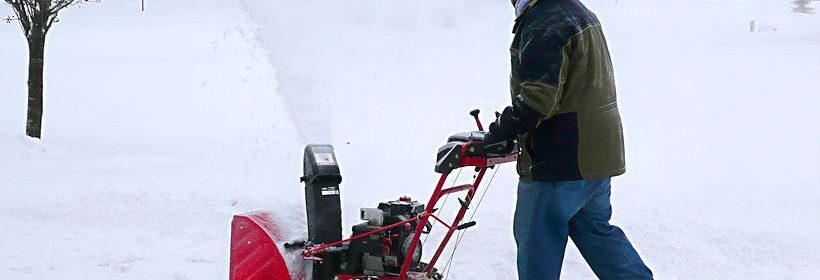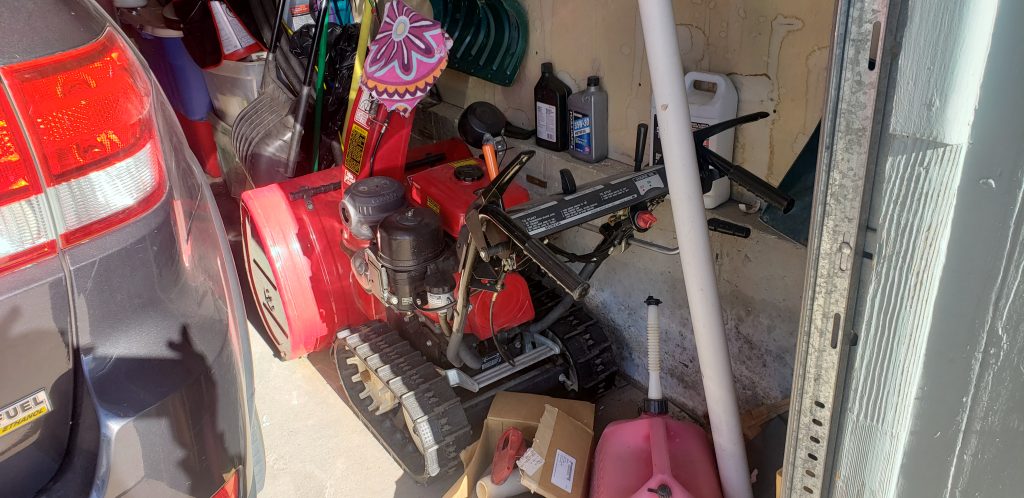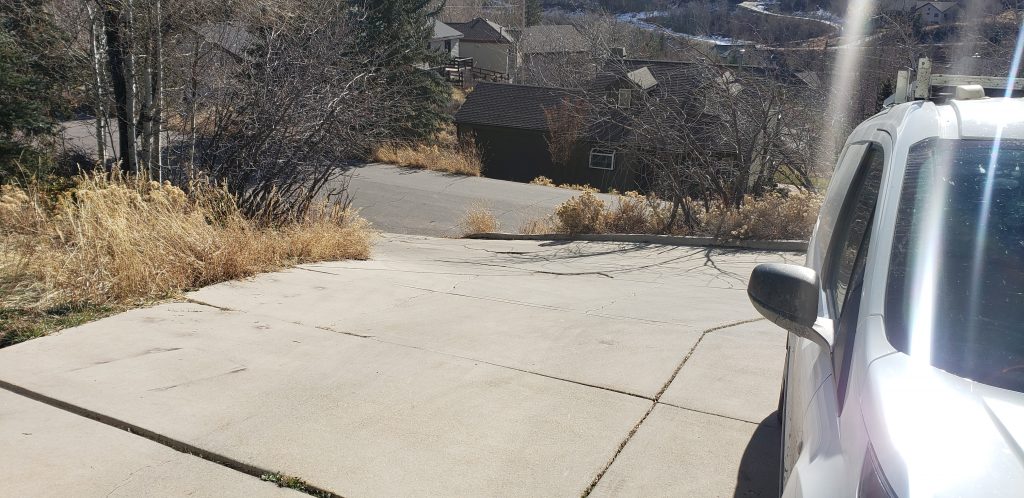Winter is Here. Start Your (Snowthrower) Engines!

It may feel like September in the west but the east is already under the white siege and thinking, “If only we had a few more weeks to prepare.” We’re never ready for winter; and we’re not just talking about physically. It’s a mechanical issue too. Is your car winterized? Your roof reinforced? Your snowblower armed for action? Here’s your Snowthrower Prep 101.
I got this message from the Outdoor Power Equipment Institute (OPEI) that reminded me to double check the Honda snowblower I picked up at a yard sale this summer. I unloaded my Ariens at the same time. My boyfriend chastised me for making the switch because he planned to “drive it into the ground” and I was “wasting my money.” I got the Honda for $800 and sold the Ariens for $450.
But here’s the thing. You don’t want to be left out in the cold when you realize your trusty blower crapped out in the middle of January. My Ariens rocked for us but bolts and cables were now disintegrating. I had a Honda trackdrive (my Ariens had wheels) first and loved it but Honda came and took it away from me after two seasons of testing.
When I saw this same beast in the neighborhood, I pounced. Luckily I guess, we still have another week of 50-degree sun in Park City. Snow is forecast for late next week.
“If you’re anticipating bad weather or snow, start the machine and make sure it operates before you need it and before repair shops are busy,” says OPEI President and CEO Kris Kiser. “Gas stations also can close and roads can be treacherous during a winter storm. You want to protect your power by having the right and fresh fuel on hand for your equipment. And, remember, gasoline-powered snow throwers should use E10 or less.” Huh? 🙂
Lessons from the Outdoor Power Equipment Institute
GETTING READY
Have you read your owner’s manual? Read up on safe handling procedures. Review how to operate the controls. You should be able to shut off your equipment quickly. If you lost your manual, you can look it up online, and store a copy on your computer so you have the manual available to reference in the future.
Have you checked your equipment since storing it? Make sure all equipment is completely powered off when checking it over. If you forgot to drain the fuel last winter before storing your snow thrower, drain the gas tank now. Adjust any cables and check the auger when the equipment is powered off.
Is your equipment where you can get to it easily? Move your equipment to a convenient and accessible location, so you can get to it quickly when you need it.
Have you purchased the right fuel? Be sure to use the correct fuel, as recommended by your equipment’s manufacturer. Place gasoline in a fuel container and label it with the date purchased and the ethanol content of the fuel. Use fresh fuel in your snow thrower as fuel that is more than 30 days old can phase separate and cause operating problems. Make sure fuel is stored safely and out of the reach of children. For more information on fueling properly see www.LookBeforeYouPump.com.
Are you fueling safely? Before you start the engine, fill up the fuel tank on your snow thrower while the engine is cold and outside your home or garage. Never add fuel to a running or hot engine.
Are batteries charged? If using a battery/electric-powered snow-thrower, make sure batteries are fully charged, in case electricity goes out during a winter storm.
Is the area you intend to clear free of obstructions or hidden obstacles? Snow can hide objects. Doormats, hoses, balls, toys, boards, wires, and other debris should be removed from the areas you intend to clear. When run over by a snow thrower, these objects may harm the machine or people.
Are you dressed properly for winter weather? Locate your safety gear now, and place it in an accessible closet or location in your home. Plan to wear safety glasses, gloves and footwear that can handle cold and slippery surfaces.
OPERATING SNOW THROWERS SAFELY
Do you have a clean out tool or stick? NEVER put your hands inside the auger or chute. Use a clean out tool (or stick) to unclog snow or debris from your snow thrower.
Do you turn off your snow thrower if you need to clear a clog? Always turn off your snow thrower and wait for all moving parts to come to a complete stop before clearing any clogs or debris.
Do you use your snow thrower in visible conditions? Never operate the snow thrower without good visibility or light.
Do you know where your cord is? Use an extension cord that is weather-resistant and designed for outdoor use. If you have an electric-powered snow thrower, be aware of where the power cord is at all times. Avoid tripping. Do not run over the power cord.
Can you aim your snow thrower with care? Not only could you piss off your neighbors by piling snow onto their driveway but that dogs jumping at your fans of snow could get run over. Never throw snow toward people or cars. Do not allow anyone to stand in front of your snow thrower. Keep children or pets away from your snow thrower when it is operating.
Speaking of which-
Are pets and children inside while the snow thrower is operating? Kids and pets may love to play in the white stuff, but it’s best to keep them inside your home and supervised (by someone else) while you are using your snow thrower to clear a path or driveway. Do not allow them to play in the snow as it is tossed out of the snow thrower’s chute. I fail at this one but I have a smart dog. He gets his exercise this way and I don’t have to take him for a walk after 30 minutes of blowing.
Good luck this winter! I seriously hope you don’t have a driveway like mine but if you do, a trackdrive on your thrower and Blizzak snowtires on your car are the only way to go.





